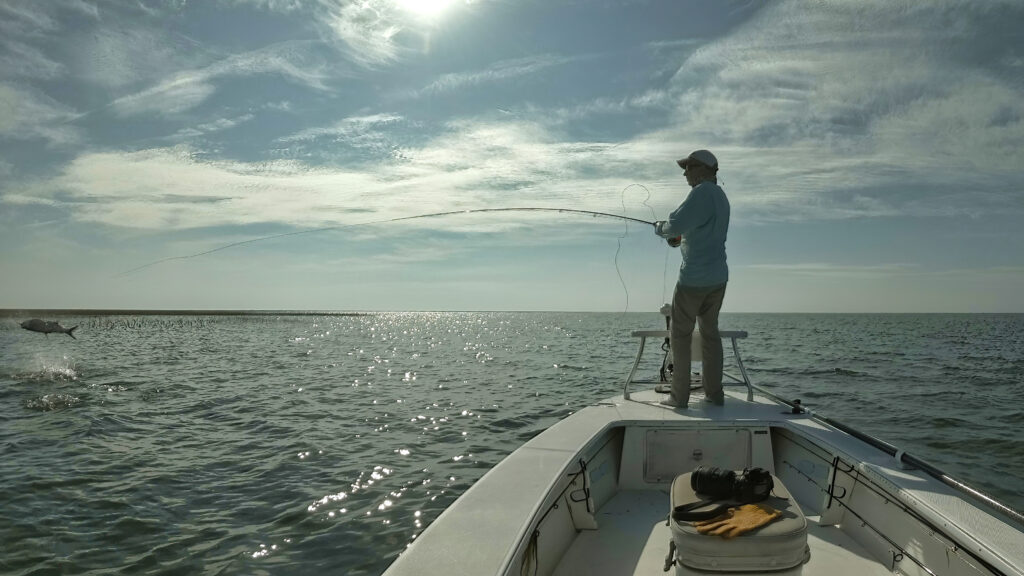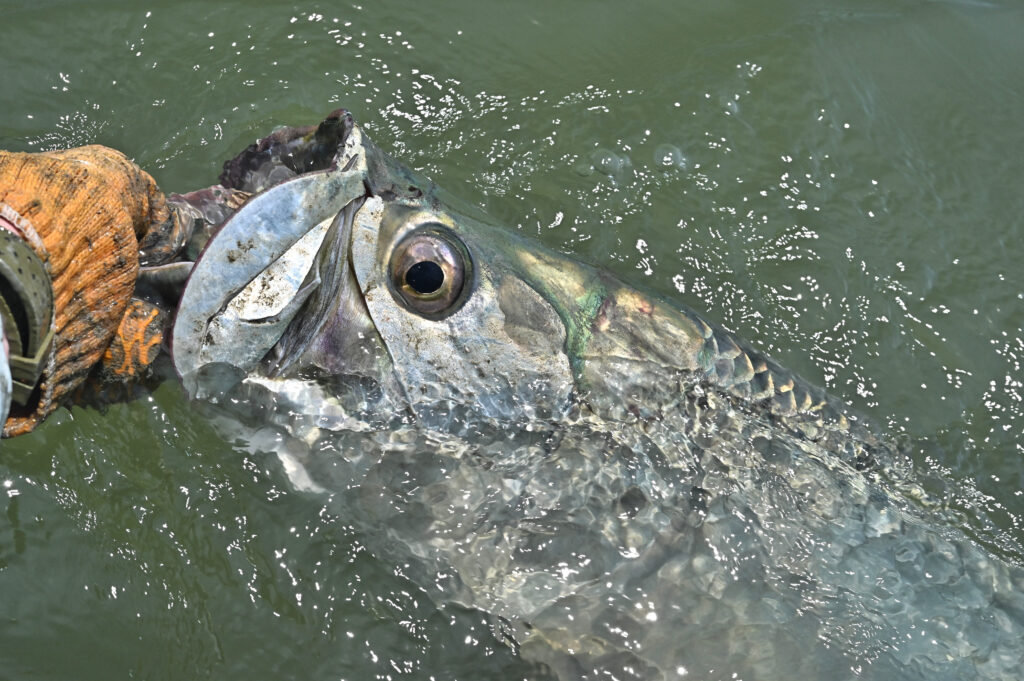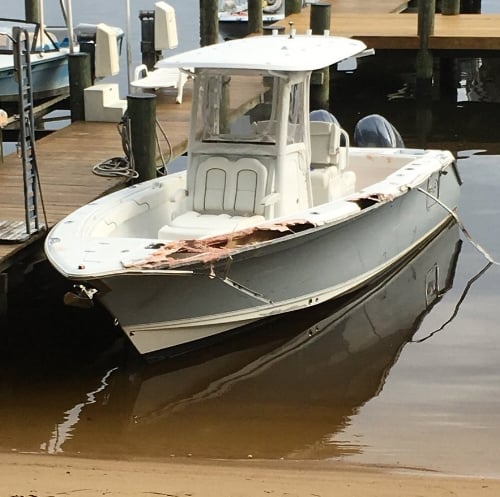Even the most experienced Maryland angler or fishing guide would be surprised to find schools of the hard-fighting tarpon in the top half of the Bay, but that’s exactly what happened earlier this month.
It would be difficult to argue against the fact that tarpon are the ultimate inshore game fish along the south Atlantic coast. They grow big: the world record is close to 300 pounds, and fish over 300 pounds have been reported but not certified as records. They are fast and they jump clean out of the water. They are difficult to hook. They are smart, and they never give up. You can actually hear it when you’re hooked to one, when the drag screams and the gill plates rattle on a jumping fish.

Tarpon have been found reliably in Virginia for decades. Most of these migrants spend the summer on the seaside of Virginia’s Eastern Shore. A few wanderers are spotted or hooked inside the Bay each year, but never in large numbers. But that could be changing, as more tarpon have been spotted in Maryland’s portion of the Bay this year.
Tarpon are not totally unheard of in Maryland. A small stray was netted by researchers near Kent Island in 2019. An angler hooked an estimated 6-foot tarpon just north of the Virginia boarder in 2020. Erik Zolkovitz, Maryland Department of Natural Resources’ Recreational Fisheries Outreach Coordinator, said, “This year is the first time we’ve gotten multiple reports of schools of tarpon, and not just a stray fish.”
Captain Tom Weaver, of Fish with Weaver Charters, is one of this year’s tarpon spotters. On August 1st, he was slowly looking for redfish by Hooper Island Lighthouse when he saw some movement in the water ahead. Fishing out of Annapolis, he did not expect to come across a small school of seven or eight tarpon. He estimated their weight at up to 100 pounds. He made a cast and got a bite, but, not being prepared for a tarpon, the tarpon won.
Captain Weaver posted this video of the school of tarpon just below the surface:
According to Weaver, he and two other charter captains spotted the small school on August 1st. The tarpon were hanging out in one particular area. He tried to follow them around to get more shots. After about 90 minutes he lost sight of the fish. “I now keep a look out for them and carry several rods and lures designed to catch them in case I see them again,” he said. “I have only seen them once this year. I am on the water seven days a week when weather allows.”
It is too early to tell if this is an unusual summer, or if this is a trend with more tarpon moving further north each year.
Tarpon are generally considered very poor table fare and catch and release is common among anglers. In fact, tarpon are catch and release only in Florida. That state also regulates the amount that a tarpon can be handled after being caught. Unfortunately, , tarpon are not regulated in Virginia or Maryland, and progressive fisheries managers need to change that. An excellent resource on tarpon is the Bonefish & Tarpon Trust, a science-based, nonprofit conservation organization focused on bonefish, tarpon, permit and the ecosystems that support these species. In addition to focusing on factors that threaten tarpon populations, such as habitat loss and water pollution , BTT also promotes best practices for catching and handling tarpon.
If tarpon anglers are responsible, the chances of tarpon surviving after release are high. But if tarpon are fought too long or handled too much boatside, their chances of dying after being released increase greatly. Learn best fishing and handling practices for tarpon here, in case you do come across one.




